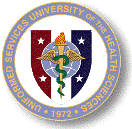United States Department of Defense

Uniformed Services University of the Health Sciences
Date of this Version
2017
Citation
Diagnostic Microbiology and Infectious Disease 87 (2017), pp. 382–385.
Abstract
Antimicrobial-resistant Escherichia coli are a concern for military health services. We studied 100 extended-spectrum beta-lactamase (ESBL)-producing and non-producing E. coli clinical and surveillance isolates from military personnel and civilians at Brooke Army Medical Center (2007–2011). Major E. coli lineages, most prominently ST10 (24%), ST131 (16%), and ST648 (8%), were distributed much as reported for other North American populations. ST131, represented mainly by its resistance-associated ST131-H30 clonal subset,was uniquely associated with a clinical origin, regardless of ESBL status. Thus, clonal background predicted resistance phenotype and clinical versus surveillance origin, and these findings could assist military clinicians and epidemiologists.


Comments
U.S. government work.